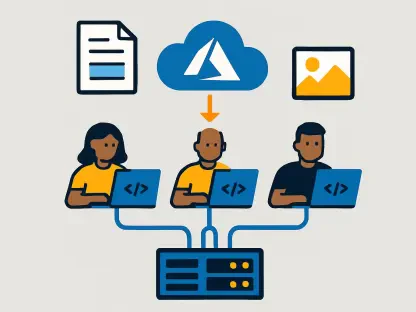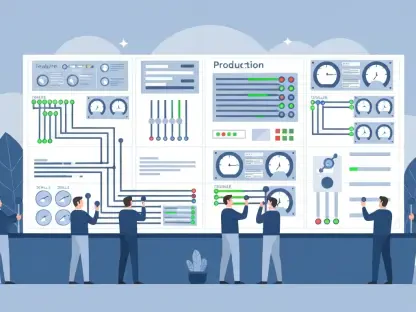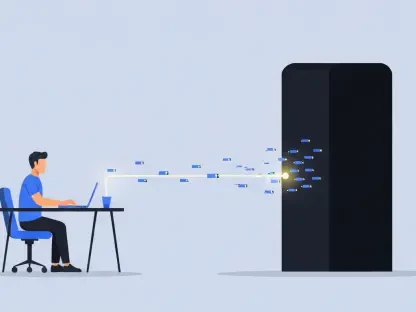I’m thrilled to sit down with Vijay Raina, a renowned expert in enterprise SaaS technology and software design. With his deep expertise in software architecture, Vijay has been at the forefront of integrating cutting-edge AI technologies into modern applications. Today, we’ll dive into the fascinating world of integration testing for AI prompts using Spring TestContainers and Ollama, exploring why testing AI responses is critical, how to set up effective testing environments, and the best practices for ensuring reliable outputs in Spring Boot applications.
How did you first recognize the importance of testing AI prompts in modern software development, and what impact have you seen it have on application reliability?
I started noticing the need for testing AI prompts when large language models became integral to many applications. The unpredictability of their responses was a real challenge—small changes in model versions or configurations could lead to wildly different outputs. Testing these prompts has proven essential for catching issues early, like regressions or unexpected behavior. It’s been a game-changer for reliability, ensuring that apps using AI don’t just work in theory but deliver consistent value to users in practice.
What are some of the biggest challenges you’ve encountered when dealing with responses from large language models, and how do you address them?
One major challenge is the inherent non-determinism of LLMs. Even with the same input, you might get different responses due to factors like model updates or randomness in generation. This makes it hard to predict outcomes. I address this by setting strict parameters during testing, like lowering the temperature for more consistent outputs, and focusing on key phrases in responses rather than exact matches. This approach helps balance the need for reliability with the creative nature of AI.
Can you walk us through how Spring TestContainers simplifies integration testing for AI prompts, especially for developers new to this technology?
Spring TestContainers is a fantastic tool because it streamlines the complexity of integration testing. It handles Docker containers automatically, so developers don’t need to write boilerplate code for setup or teardown. For AI prompt testing with Ollama, you just add an annotation like @EnableOllamaContainer to your test class, and it spins up a container with the right model and injects a ChatClient into your Spring context. This lets developers focus on writing tests rather than managing infrastructure, making it accessible even for those new to containerized testing.
What’s happening behind the scenes when you use an annotation like @EnableOllamaContainer in a test, and why is that automation so valuable?
When you use @EnableOllamaContainer, Spring detects it and triggers a series of automated steps. It starts by launching a Docker container with the Ollama runtime, pulls the specified AI model version, and sets up the connection details. Then, it integrates everything into your test environment so your code can interact with a live Ollama instance. After the test, it cleans up by stopping and removing the container. This automation is invaluable because it eliminates manual configuration errors and ensures a clean, isolated test environment every time.
When setting up a Spring Boot project to test AI prompts with Ollama, what are the critical first steps you recommend to ensure a smooth process?
The first step is to add the necessary dependencies to your project, like the Spring TestContainers library and Ollama support. Next, configure your test class with the @EnableOllamaContainer annotation and specify the model version you want to use, avoiding generic tags like ‘latest’ for consistency. Finally, ensure Docker is running on your system or CI environment since TestContainers relies on it. These steps create a solid foundation, minimizing setup issues and letting you dive straight into writing meaningful tests.
How do you approach writing a basic integration test for an AI prompt, and what elements do you prioritize to make it effective?
For a basic integration test, I start by defining a clear, simple prompt that reflects a real use case in the application. Using Spring TestContainers, I ensure the Ollama container is set up via the annotation. Then, I inject the ChatClient into my test and write assertions to validate the response. I prioritize clarity in what I’m testing—whether it’s the presence of specific content or the general tone—and I keep the test focused on one aspect of the prompt’s behavior. This keeps the test maintainable and easy to debug if something goes wrong.
Why is adjusting settings like temperature important during AI prompt testing, and how does it influence the results you get?
Adjusting the temperature setting is crucial because it controls the randomness of the AI’s output. A lower temperature, say 0.1, makes the model more deterministic, which is ideal for testing scenarios where you need consistent responses, like math or logic problems. Higher temperatures introduce more creativity but can lead to unpredictable results. By tuning this setting, you can align the AI’s behavior with your test goals, ensuring you’re validating the right kind of output for your application’s needs.
What are some advanced techniques you’ve used to test multiple AI prompts or complex scenarios, and how do they enhance test coverage?
One technique I often use is @ParameterizedTest with JUnit 5. This lets me define multiple prompts and expected outcomes in a single test class, often using something like @CsvSource to feed in different inputs. It’s great for covering a range of scenarios without duplicating test logic. For complex cases, I also test REST API endpoints that rely on Ollama services by simulating HTTP requests and validating responses. These approaches boost coverage by ensuring the AI integration works across diverse prompts and real-world application layers.
What key benefits have you seen from combining Spring TestContainers with Ollama for AI prompt testing, especially compared to traditional methods?
The biggest benefits are isolation and automation. Each test runs in a fresh Ollama container, preventing interference from previous runs. There’s no manual setup—just an annotation handles everything, from pulling the model to cleanup. It also caches models across tests via shared volumes, speeding things up. Compared to traditional methods, where you might manage containers or mock services manually, this approach saves time and reduces errors, letting developers focus on crafting robust tests rather than wrestling with infrastructure.
Looking ahead, what’s your forecast for the future of integration testing with AI technologies in software development?
I believe integration testing for AI will become even more critical as models grow in complexity and usage. We’ll likely see tighter integration between testing frameworks and AI runtimes, with tools like Spring TestContainers evolving to support more models and configurations out of the box. There’s also a trend toward smarter assertions—tests that adapt to AI’s variability rather than expecting rigid outputs. Ultimately, I think testing will shift toward hybrid approaches, blending deterministic checks with probabilistic evaluations, to better handle the unique challenges of AI-driven applications.









